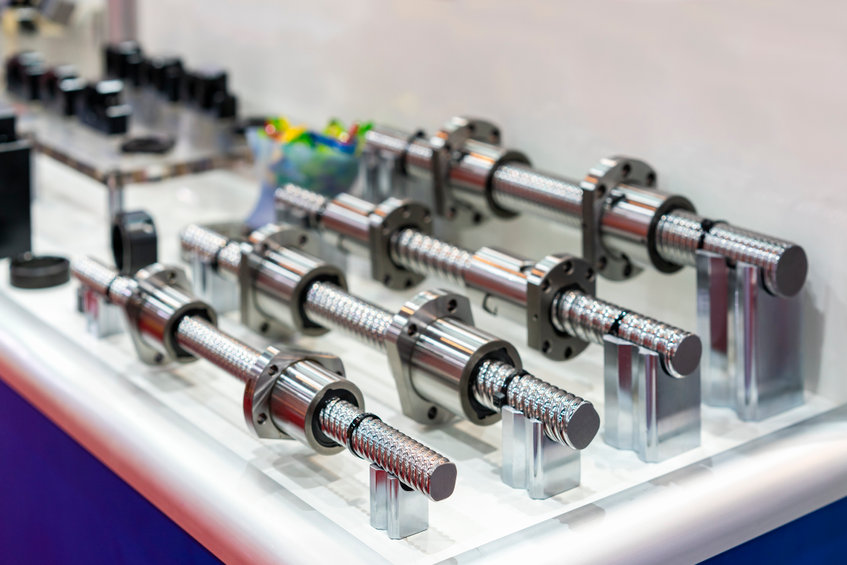A Guide to Actuator Types: Electric vs. Pneumatic vs. Hydraulic
If there’s a piece of machinery operating in your plant, then there’s a good chance that an actuator is working behind the scenes to help it do what it needs to be doing. However, there are several types of actuators and the one you select should be dictated by the movement you need, as well as the available power source. This page will take a detailed look at the different types of actuators to help you choose the right one based on your specific requirements.

What is an Actuator?
First things first. Let’s start by defining “actuator.” On a very basic level, actuators are components that create movement within a machine or mechanism.
Actuators are classified by the type of motion they create – either linear or rotary – and what type of power source is used to operate them – pneumatic, electric or hydraulic. Linear actuators create motion in a straight line, while rotary actuators create motion in a circular or rotational fashion. Linear and rotary actuators are commonly found in machinery used in industrial environments, such as material handling and packaging equipment.
A Detailed Look at the Main Actuator Types
While actuators are broadly defined as components that create linear or rotary motion, there are various types of actuators. In this section, we’ll take a detailed look at the actuators you are likely to encounter in industrial environments, based on their source of power.
Pneumatic Actuators
Pneumatic actuators are ideal for applications that require precise motion. They work by using pressurized gas or compressed air to create mechanical movement, which can be either linear or rotary. Pneumatic actuators are commonly found in industrial automation machinery, notably material handling applications that need to transfer, pick, place, clamp or index. They offer high force and fast speeds in a compact footprint.
Key Advantages of pneumatic actuators include:
● Low cost
● High force and speed
● Simplicity of operation
● No sophisticated transfer mechanisms are required
● Tolerance to overloads, up to a full stop
● High reliability of work
● Explosion and fire safety
● Ease of assembly
● Force and speed are easily adjustable
Disadvantages of pneumatic actuators include:
● Difficult to attain mid-stroke positioning
● Difficult to maintain uniform and constant speed
● Difficulties in performance at slow speeds
● Require clean, dry air for maximum performance and life expectancy
● High maintenance and operating costs when considering a complete air system is required
Electric Actuators
Electric actuators work using electricity. They are often found in robotic equipment. Electric actuators are often more precise than pneumatic actuators. They’re also very scalable, reprogrammable and speed and force can be customized. Because they are powered by electricity, which can be AC or DC current, they are commonly used in industrial applications.
Electric actuators are also available in subcategories, including electromechanical and electrohydraulic. Contact JHFOSTER to learn more about what type of electric actuator is best for your application.
Key advantages of electric actuators include:
● Precise control
● Multiple positions, ability to stop at any point of the stroke
● Easy to set acceleration and deceleration
● No external sensors
● Low operating costs
● Help adapt machines to flexible processes
● Superior performance at high speeds
● Minimal maintenance
Disadvantages of electric actuators include:
● High cost
● Sensitive to vibration
● More complex technology
● High speeds, less thrust
● High thrust, less speed
Hydraulic Actuators
Hydraulic actuators typically work in a linear motion and are commonly found in applications that require clamping, opening and pressing. They use hydraulic power to facilitate operation. While most hydraulic actuators are designed to create linear motion, they can create rotary motion. One of the biggest benefits of hydraulic actuators is their high force capability.
How to Choose the Right Actuator for Your System
Choosing the right kind of actuator for your application ensures that process efficiency is maximized while costs are minimized. When selecting an actuator, keep in mind that pneumatic actuators are the go-to choice for applications that demand high force, speed and durability at a low initial unit cost. Electric actuators are the best choice when you need superior precision, control, flexibility for multiple positions and lower long-term operational costs.
An assessment of your specific needs and equipment can help you find the actuator that will help increase the performance and reliability of your system.
Frequently Asked Questions about Actuators
What are actuators in robots?
Actuators serve as the muscles of a robot. They are essential robotic components because they convert an energy source into physical motion, allowing the robot to move its joints, grip objects and perform the tasks for which it is programmed.
What are the main types of actuators used in robots?
Electric, pneumatic and hydraulic actuators can all be found in robotic systems, but electric actuators, including servo motors, are frequently used in modern robotics due to their high precision, control and ease of integration.
Is a servo an actuator?
Yes. A servo motor is a specific type of actuator that uses a feedback mechanism to provide very precise control over angular position, velocity and acceleration.
Are actuators AC or DC?
Electric actuators can be powered by either alternating current (AC) or direct current (DC), depending on the requirements of the application. However, pneumatic actuators are powered by compressed air and hydraulic actuators are powered by pressurized hydraulic fluid.
Is a mechanical relay an actuator?
Yes. A mechanical relay is a device that uses an electromagnet to open or close moveable electrical contacts in response to a signal.
Your Partner in Automation and Actuator Solutions
As your partner in evaluating, designing and integrating the best components for your system, JHFOSTER can help you find the actuator that will help you get the job done. Contact a JHFOSTER expert today to discuss your requirements so we can help you find the most reliable and efficient actuator for your application.
